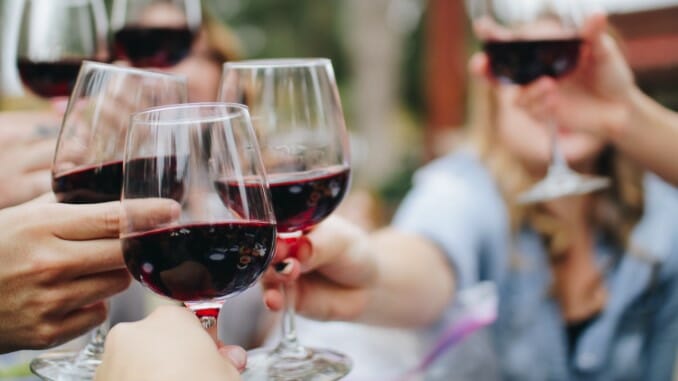How Two Centuries of Failure Finally Birthed American Wine
Photos via Unsplash, Kelsey Knight, Viktor Forgacs
This piece is part of a series of essays on alcohol history. You can read more here.
More than any time before in the history of our nation, Americans love wine. It’s not a subject I tend to write about much at Paste, from a standpoint of tastings or reviews—I enjoy wine, but typically reserve my drink industry criticism for beer and spirits. At the same time, though, I still consume wine quite often, and in this, I am indeed a typical American. Per capita wine consumption has continued a steady ascent in the U.S. for decades at this point. This is one of the central truths of American alcohol for the last several decades—we have steadily become less a nation of beer drinkers, even during the craft beer revolution, and more a nation of wine drinkers. And much of that growth has been fueled by our own, domestic wine industry.
How funny to think, then, that for somewhere in the neighborhood of two and a half centuries, Americans failed almost universally to produce any potable wine. From the early 1600s, to the mid-1800s, we failed over and over and over again to grow wine-producing grapes that produced a beverage that was in any way akin to European wine, and it wasn’t for lack of trying. Rather, the American heartland simply presented unique challenges that made our homegrown wine industry a nearly impossible hurdle … and in the process, American vines also managed to indirectly lead to the devastation of the French wine industry in the 1800s.
Indeed, for several centuries, “American wine” was a positively oxymoronic expression, and one that probably could have been used as a curse.
Let’s get into the “why.”
America’s Colonial Thirst, and Grape Failures
Pretty much from the beginning, colonists of what would eventually be the United States maintained a rather heroic consumption of alcohol, which by and large outstripped the free-drinking British who founded those colonies. Rum was the spirit du jour, though perhaps the most widely consumed form of alcohol was cider, which was easily produced from the thousands of wild American apple varieties, the vast majority of which are now lost to history. As historian W.J. Rorabaugh wrote in his research on American alcohol consumption for The OAH Magazine of History:
By 1700, the colonists drank fermented peach juice, hard apple cider, and rum, which they imported from the West Indies or distilled from West Indian molasses. Drinking was an important part of the culture, and people passed around jugs or bowls of liquor at barbecues, on market days, and at elections. Candidates gave away free drinks. A stingy candidate had no chance of winning. Practically everyone drank. Even restrained New Englanders consumed great quantities of liquor. The Puritans called alcohol the “Good Creature of God,” a holy substance to be taken proudly yet cautiously.
One thing that the drinkers of the 1600s and 1700s didn’t have as much access to was wine, which was primarily available (though expensive) as imported Spanish madeira, a fortified wine that was better suited to survive a trip across the sea. As with beer, the slowness of intercontinental sea travel made the transport of wine a trickier proposition, making it a luxury item not consumed by most Americans.
Nevertheless, British merchants had long eyed the new world as a potential goldmine of wide open spaces that could be adapted to wine production, giving them a lucrative product they could potentially sell back in Europe. Eventual American wine production was such an assumption, in fact, that the Virginia House of Burgesses passed an act in 1619 that literally required every male household in Virginia to plant at least 10 vines of imported European grapes, for the making of wine.
 Early colonists expected wine grapes to be a prolific cash crop for American farmers. Suffice to say, they weren’t.
Early colonists expected wine grapes to be a prolific cash crop for American farmers. Suffice to say, they weren’t.
-

-

-

-

-

-

-

-

-

-

-

-

-

-

-

-

-

-

-

-

-

-

-

-

-

-

-

-

-

-

-

-

-

-

-

-

-

-

-

-

 No one wanted an American wine industry more than Thomas Jefferson, but it remained painfully out of reach during his lifetime.
No one wanted an American wine industry more than Thomas Jefferson, but it remained painfully out of reach during his lifetime. Little green destroyers of grape vines.
Little green destroyers of grape vines.






































